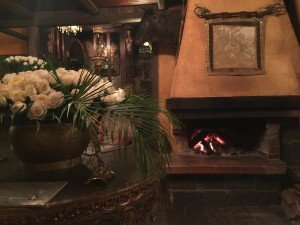I love it when something exceeds expectations, especially ones that result from lots of hype. That was the case yesterday with a section of track on our Tren Crucero tour of Ecuador. It is named the Devil’s Nose, because the mountain looks like a huge nose, and it was clearly a devil of a job to carve track up its sheer face in the early part of the last century.
There is a Z in Devil’s Nose, because that’s the design of the train’s progress up the mountain. It goes forward, then the track is switched and the train backs up the middle line of the Z. After another switch of the tracks, the train proceeds forward on its way, continuously climbing into the Andean highlands of Ecuador.
Views from the left side of the train as it climbed the nose were beautiful and dizzying. You looked hundreds of feet down at the river we had been following until the ascent, and you could see the track, as if it were my old Lionel train set’s in the living room, looking perfect and new. Our guide on the train said 4,000 Jamaican workers were brought in to build the track through the mountains, and half of them died during the project.
We stopped a couple of places during yesterday’s 12 hours of travel by train. If I was grumpy about the lack of sleeper cars on the first day, yesterday cured me of that. This train ride is one for the ages, and if you have to sleep in hotels along the way, you won’t mind, if you love trains as much as I do. The scenery is simply breathtaking. At one point we could see a plume of dark ash rising from the Tunguragua volcano. Scenes out the big windows alternated between mountains, valleys, and colorful towns where the arrival of the train prompted curious waves from residents, returned by the travelers.
The only complaint we have about our hotel for this stop is that we will not have much time enjoying its antique charms. It is the Hacienda Andaluza in Riobamba. The rooms have antique bells outside them, as doorbells. There were red rose petals on the white bedspreads when we checked in last night. The dining room and lobby is full of antique knicknacks–typerwiters, agricultural tools, cash registers, musical instruments, and faded tapestries on the walls. Fat rabbits live in the big central courtyard, and this morning I am writing by a toasty real-wood fire in a fireplace. The buffet offered strong coffee at 5 am with a bowl of chocolate powder that you could dip into with a spoon to sweeten your cup.
Our two blue buses will return us this morning to the Riobamba station, leaving the hacienda at 7 a.m. As the red and black train chugs along at a stately speed, a team of motorcycle riders accompanies us. They zip from one crossing to the other, to make sure drivers or people leading llamas make no mistakes in judging when it is safe to cross. The motorcycle guys have white helmets, walkie talkies and maybe guns. Sometimes they ride beside us on the road standing up on the posts of their cycles, evidence of how much fun they’re having perhaps.
It would be easy to put together a tour highlighting the extremes of wealth and poverty in most countries, including the U.S. We are certainly seeing that disparity here in Ecuador. In a single day, we had dinner at this elegant hacienda after visiting an indigenous agricultural community outside Colta, where the manual work looks very hard to this pampered observer. I saw an old woman carrying a heavy sack of something on her back, wrapped around her shoulders by straps. I would guess she was 80 years old or so. She stepped carefully, with a limp, and I watched with respect as she made her way slowly down a street. After supper here at Andaluza, we were serenaded by four musicians playing guitar, mandolin, traditional flutes, and drums.


